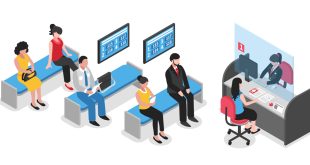Ride-sharing apps have transformed the way people navigate cities, offering a convenient and efficient alternative to traditional transportation methods. The success of these apps hinges on the expertise and innovation of ride-sharing app developers, who play a crucial role in creating seamless user experiences. This article explores the value of ride-sharing app developers, particularly in tech hubs like San Francisco, where the convergence of talent, technology, and creativity has led to the development of some of the most popular ride-sharing platforms in the world.
The Evolution of Ride-Sharing
The concept of ride-sharing dates back to carpooling initiatives during World War II, but it wasn’t until the advent of mobile technology that ride-sharing became a global phenomenon. The launch of apps like Uber and Lyft in the early 2010s revolutionized the transportation industry, providing users with on-demand access to rides through their smartphones. These apps utilized GPS technology, real-time data, and sophisticated algorithms to match riders with drivers, making transportation more accessible, affordable, and convenient.
The ride-sharing industry has since expanded rapidly, with numerous companies entering the market to offer similar services. This growth has created a high demand for ride-sharing app development, as companies seek to differentiate themselves in a competitive landscape. Developers are tasked with creating apps that are not only functional but also intuitive, reliable, and capable of handling large volumes of users.
User Experience: The Key to Success
User experience (UX) is a critical factor in the success of any ride-sharing app. Users expect a seamless experience from the moment they open the app to the completion of their ride. This includes an intuitive interface, fast loading times, and a smooth booking process.
For ride-sharing app developers, creating a positive UX involves several key elements:
- Simplicity: The app’s interface should be simple and easy to navigate, with clear instructions and minimal steps required to book a ride. Users should be able to find the information they need quickly and without confusion.
- Speed: Ride-sharing apps need to be fast and responsive. Delays in loading times or processing requests can frustrate users and lead to them abandoning the app in favor of a competitor.
- Customization: Personalization features, such as the ability to save favorite locations or choose preferred payment methods, can enhance the user experience and increase customer loyalty.
- Feedback Mechanisms: Allowing users to rate their drivers and provide feedback is important for maintaining quality and improving the service. Developers must ensure that these feedback mechanisms are easy to use and that the ratings are integrated into the app’s algorithm to improve future rides.
- Safety Features: Users need to feel safe when using ride-sharing services. Developers should include features such as driver verification, ride-sharing options, and emergency assistance buttons to enhance security.
The Role of Data in Ride-Sharing App Development
Data plays a vital role in ride-sharing app development, influencing everything from route optimization to driver allocation. Developers must be able to collect, analyze, and utilize data effectively to improve the app’s performance and provide a better user experience.
For instance, ride-sharing apps rely on data to match riders with drivers in the most efficient way possible. This involves analyzing factors such as the driver’s location, current traffic conditions, and the rider’s destination to determine the best match. The app’s algorithm must be able to process this data in real-time to ensure that rides are allocated quickly and efficiently.
Data is also used to optimize routes, reducing travel times and improving the overall efficiency of the service. By analyzing traffic patterns and using predictive modeling, developers can create algorithms that suggest the fastest routes for drivers. This not only improves the user experience but also reduces costs for the company by minimizing fuel consumption and vehicle wear and tear.
In addition to operational data, ride-sharing apps also collect user data, such as ride history and payment information. This data can be used to personalize the user experience, offering features such as saved locations and preferred payment methods. However, developers must also be mindful of data privacy concerns and ensure that user information is stored securely and used responsibly.
Challenges in Ride-Sharing App Development
While ride-sharing app development offers numerous opportunities, it also presents several challenges that developers must overcome to create a successful app.
- Scalability: As ride-sharing apps grow in popularity, they must be able to scale to accommodate a larger user base. This requires a robust backend infrastructure that can handle high volumes of requests without compromising performance. Developers must ensure that the app can scale seamlessly as the user base grows, without causing downtime or affecting the user experience.
- Data Security: With the increasing amount of personal data being collected by ride-sharing apps, data security has become a top priority. Developers must implement strong encryption and security protocols to protect user information from cyber threats. This includes securing payment information, personal details, and ride history, as well as ensuring that data is stored and transmitted securely.
- Regulatory Compliance: Ride-sharing companies must navigate a complex regulatory landscape, with different rules and regulations in place in various cities and countries. Developers must ensure that their apps comply with local laws and regulations, such as background checks for drivers, insurance requirements, and data protection laws. Failure to comply with these regulations can result in fines, legal issues, and damage to the company’s reputation.
The Impact of Ride-Sharing Apps on Urban Mobility
Ride-sharing apps have had a profound impact on urban mobility, transforming the way people move around cities. By providing a convenient alternative to traditional transportation methods, ride-sharing apps have contributed to the reduction of traffic congestion, decreased demand for parking spaces, and increased access to transportation in underserved areas.
One of the key benefits of ride-sharing apps is their ability to reduce the number of vehicles on the road. By allowing multiple passengers to share a ride, these apps help to decrease the overall number of cars on the road, leading to reduced traffic congestion and lower emissions. This has a positive impact on the environment and improves the overall quality of life in urban areas.
Ride-sharing apps have also increased access to transportation in areas where traditional taxi services are scarce or unreliable. By connecting riders with drivers in real-time, these apps provide a reliable and convenient transportation option, particularly in areas that are underserved by public transit.
Furthermore, ride-sharing apps have contributed to the growth of the gig economy by providing drivers with a flexible source of income. This has had a positive economic impact, particularly in cities like San Francisco, where the cost of living is high, and flexible job opportunities are in demand.
San Francisco’s Influence on Ride-Sharing Innovation
San Francisco’s influence on the ride-sharing industry is undeniable. It’s the birthplace of major players like Uber and Lyft, companies that have fundamentally changed how people think about transportation. These companies were able to thrive in San Francisco due to the city’s willingness to embrace new technologies and the presence of early adopters who were eager to try new services.
The city’s complex transportation challenges, such as traffic congestion, limited parking, and hilly terrain, have also provided a unique testing ground for ride-sharing innovations. Developers in San Francisco have had to address these challenges head-on, creating solutions that not only work locally but can also be scaled and adapted for use in other cities around the world.
San Francisco’s ride-sharing app developers are also known for their ability to integrate advanced technologies into their platforms. For example, Uber has been a pioneer in utilizing artificial intelligence and machine learning to optimize ride matching, route planning, and dynamic pricing. These innovations have allowed the company to improve the efficiency of its service, reduce wait times, and offer more competitive pricing.
Similarly, Lyft has focused on creating a more community-oriented experience, integrating features like ride-sharing for commuters and partnerships with public transportation systems. This approach has not only differentiated Lyft from its competitors but has also contributed to a more sustainable urban transportation ecosystem.
The Future of Ride-Sharing App Development
The future of ride-sharing app development is filled with exciting possibilities, as developers continue to explore new technologies and business models to enhance the user experience and address the evolving needs of urban transportation.
- Autonomous Vehicles: One of the most anticipated developments in ride-sharing is the integration of autonomous vehicles. Companies like Uber and Waymo are already testing self-driving cars, and it’s only a matter of time before they become a common feature in ride-sharing fleets. App developers will play a crucial role in creating the software and algorithms that enable these vehicles to operate safely and efficiently in complex urban environments.
- Electric Vehicles (EVs): The shift towards electric vehicles is another major trend that will impact ride-sharing app development. As cities push for cleaner transportation options, ride-sharing companies are increasingly adopting EVs in their fleets. Developers will need to create apps that can support the unique requirements of EVs, such as locating charging stations and optimizing battery usage.
- Integrated Mobility Solutions: The future of urban transportation is likely to involve a combination of different modes of transport, including ride-sharing, public transit, biking, and walking. Developers will need to create integrated mobility solutions that allow users to seamlessly transition between different modes of transport within a single app. This will require advanced algorithms, partnerships with transportation providers, and a deep understanding of user behavior.
- Sustainability: As concerns about climate change and sustainability grow, ride-sharing companies will need to prioritize environmentally friendly practices. Developers can contribute by creating apps that promote ride-sharing over single-passenger trips, encouraging the use of EVs, and integrating with public transit systems to reduce the overall carbon footprint of urban transportation.
The Strategic Advantage of App Developers in San Francisco
San Francisco’s app developers have a strategic advantage in shaping the future of ride-sharing due to their proximity to the tech industry’s most influential players and their access to cutting-edge technologies. The city’s vibrant startup ecosystem fosters collaboration and innovation, allowing developers to rapidly prototype new ideas and bring them to market.
Moreover, San Francisco’s app developers benefit from a strong network of investors, mentors, and industry experts who can provide the resources and guidance needed to scale successful products. This support system has been instrumental in the growth of many of the world’s leading ride-sharing companies and will continue to play a crucial role in the development of the next generation of transportation solutions.
Conclusion
Ride-sharing app developers play a vital role in shaping the future of urban transportation, creating platforms that connect millions of riders and drivers around the world. In San Francisco, a city known for its innovation and technological prowess, these developers have been instrumental in transforming the ride-sharing industry and setting new standards for user experience, safety, and efficiency.
The value of ride-sharing app development lies not only in the creation of functional and reliable apps but also in the ability to anticipate and adapt to changing user needs and technological advancements. As the industry continues to evolve, app developers in San Francisco will remain at the forefront, driving innovation and ensuring that ride-sharing remains a convenient, sustainable, and accessible mode of transportation for all.
Whether through the integration of autonomous vehicles, the tion of electric vehicles, or the development of integrated mobility solutions, the future of ride-sharing will be shaped by the creative minds and technical expertise of app developers in San Francisco. Their work will continue to create seamless experiences that enhance urban mobility and improve the quality of life in cities around the world.
 Daily Blogger News Stay updated with the latest trends and insights. Your reliable source for daily updates and information.
Daily Blogger News Stay updated with the latest trends and insights. Your reliable source for daily updates and information.







